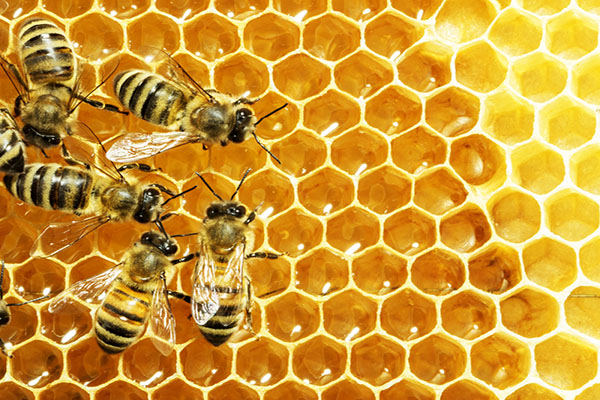Whether youre interested in beekeeping or just want to keep your family safe, its important to know the facts about bees. In order to do that, we must first dispel the myths.

Bees make it possible for food to reach our table. We have bees to thank for many of our favorite foods, including apples, almonds and the pumpkin in our pies. Honey bees are pollinators that transfer pollen from one flower to another, fertilizing the plant so it can grow and produce food. Without bees to transfer seeds, many crops would die.
Despite their beneficial role in food production, bees are often feared and considered a nuisance. They're also the subject of many myths, old wives’ tales and urban legends. Below are some bee facts, as well as some debunked myths.
Eating local honey every day prevents allergies
Fiction.
It’s true that eating a small amount of something you’re allergic to can make you less sensitive to it - though you should only do so under the guidance of an allergist. Over time, your body can build up an immunity to the allergen. Some people think eating local, unprocessed honey prevents allergies in the same way because the honey contains pollen to which you’re likely exposed to on a daily basis. Unfortunately, there’s no way to know exactly what’s in your honey. Furthermore, you’re probably not allergic to the pollen from brightly colored flowers that’s used to make honey. Pollen from weeds, trees and grasses is the more likely culprit.
Killer bees seek out people and animals to kill them
Fiction.
Africanized honey bees (aka “killer bees”) do NOT form large swarms to hunt for people or animals. They sting to defend themselves or their nest. Killer bees are very sensitive to vibrations and can sense pulsations from power equipment (lawn mower, tractor) up to 100 feet away. Stinging attacks typically occur when the killer bee nest is threatened by the noise or vibration of an intruder.
Jumping into water is a good way to avoid a bee sting
Fiction.
Killer bees can fly above the water’s surface and linger in the area until their attention is pulled away in another direction. Instead, if bees attack, run away as fast as possible. Get indoors or to an air-conditioned vehicle if you can. Do NOT stand and swat at the bees — that only aggravates them and increases your chance for stings. If possible, cover your body and face with a towel or blanket as you run away. Using your shirt to protect your face leaves your torso more vulnerable to stings, but can help protect your face and find an escape route.
A killer bee sting leads to instant death
Fiction.
Human fatalities from killer bee stings are rare. A single bee sting can be fatal if you’re allergic to the bee venom; however, most people can withstand 15-25 stings without medical intervention (though consulting your doctor after a bee sting is always advised). Pain, redness and swelling are normal and are not signs of a severe allergic reaction. People with a history of systemic allergic reactions (difficulty breathing, fainting) should carry epinephrine and seek immediate medical treatment for a bee sting of any kind, according to the CDC.
Using tweezers is the best way to remove the bee stinger
Fiction.
After you’re stung, remove the stingers right away to help prevent more venom from being released into your body. But using tweezers or squeezing the stinger with your fingers can release more venom into the wound. Instead, remove the stingers by scraping the area with a fingernail, the edge of a credit card or another item with a dulled edge.
Taping a copper penny over the bee sting relieves the swelling
Fiction.
There are many old wives’ tales about treating bee stings. Unfortunately, there’s no scientific evidence that this folk remedy works. Consult your doctor for any suggestions to relieve pain or swelling.
If you know you may be allergic or if you experience symptoms other than pain and localized swelling, seek immediate medical treatment. Consult your doctor if you have questions or concerns about bee stings.



